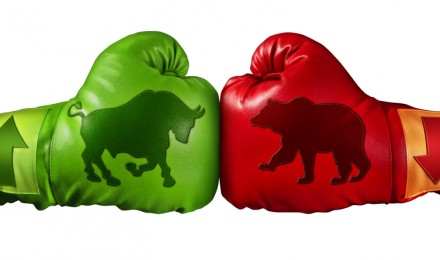Well, uh, maybe…maybe not. How’s that for an answer!? Unfortunately no one knows for sure, or I guess a more precise answer is that there is vehement disagreement on the issue. The arguments run deep and can get complicated. However, there is one thing that nearly all of the debaters agree on and that is that no government wants to go to a gold (or silver) backed currency. The reasons are myriad but the most obvious and logical is that the gold standard curbs a governments power to manipulate the currency and therefore severely limits their power. And there is no doubt that is true. Without delving into minutia, FDR wanted more money to fight the war and the gold standard was limiting him. Same with Nixon and in a slight off-road example, Johnson got rid of the silver backed coinage. Now, there are many (many!) economists that thinks all three of those presidents did the right thing. Gold standard believers naturally disagree with every fiber of their being. The fiat money system (not precious metals based) provides tools, or weapons might be a better word, to more easily weaken or strengthen a currency as there is a total detachment from the price of gold or silver.
And while there are many example of fiat currencies going bad throughout history, there may be another one right here at home. It has now been over 40 years since Nixon put the final nail in the coffin of the gold backed dollar. If you are one of those that think it all started with Roosevelt (and many do), then the (semi) fiat dollar has been around now for 80 years or so. Either way, the years are piling up in which we have entrusted the value of the currency to politicians. And that’s when it begins to show its true colors. After an initial shock (see the great depression and the 70’s stagnation) the dollar somewhat stabilized as people and prices adjusted to the new reality. But over time erosion is nearly always inevitable and a quick glance at the U.S. debt clock shows how our politicians have safeguarded our money.
However, it must be said that there is a real difference that, in the short-term, politicians can make on the lives of its citizens. For example a weak dollar helps exporters who in turn need more people to help with the demand. And economists seem to love that type of power of manipulation as it not only highlights real effects, but also shows plenty of data that can be used for future recommendations or validate prior theories.
But the gold bugs may be getting their own data set and as the years go by in a fiat currency environment, they are beginning to show some proof of their theories:
The United States had a gold standard policy from 1789 to 1971. At the end of that 182-year period, the U.S. middle class was the broadest and wealthiest in the history of the United States, and indeed the world.
There is no doubt that that is fading, at the least, during present times and probably feels even worse than that to many. While the world’s economies struggle it is easy to pick on a fiat currency of course as people tend to be more pessimistic during these times. But it is hard to argue with the numbers, no matter how you feel about the gold standard:
In 1896, per-capita GDP in terms of ounces of gold was 10.63 ounces. At the $20.67/ounce gold parity of the time, it was the same as $219.74.
In 1970, just before the U.S. left the gold standard and devalued the dollar beginning in 1971, the U.S. per-capita GDP was 146 ounces of gold — the highest this measure has ever reached. It was equivalent to 151 $20 gold coins, as minted in 1896
Of course, the arguments run deeper than those numbers, and maybe I’ll cover some of those in a future post. But for now, it is difficult to argue that the gold standard folks’ case seems to get stronger and stronger as the years roll by.
Well, uh, maybe…maybe not. How’s that for an answer!? Unfortunately no one knows for sure, or I guess a more precise answer is that there is vehement disagreement on the issue. The arguments run deep and can get complicated. However, there is one thing that nearly all of the debaters agree on and that is that no government wants to go to a gold (or silver) backed currency. The reasons are myriad but the most obvious and logical is that the gold standard curbs a governments power to manipulate the currency and therefore severely limits their power. And there is no doubt that is true. Without delving into minutia, FDR wanted more money to fight the war and the gold standard was limiting him. Same with Nixon and in a slight off-road example, Johnson got rid of the silver backed coinage. Now, there are many (many!) economists that thinks all three of those presidents did the right thing. Gold standard believers naturally disagree with every fiber of their being. The fiat money system (not precious metals based) provides tools, or weapons might be a better word, to more easily weaken or strengthen a currency as there is a total detachment from the price of gold or silver.
And while there are many example of fiat currencies going bad throughout history, there may be another one right here at home. It has now been over 40 years since Nixon put the final nail in the coffin of the gold backed dollar. If you are one of those that think it all started with Roosevelt (and many do), then the (semi) fiat dollar has been around now for 80 years or so. Either way, the years are piling up in which we have entrusted the value of the currency to politicians. And that’s when it begins to show its true colors. After an initial shock (see the great depression and the 70’s stagnation) the dollar somewhat stabilized as people and prices adjusted to the new reality. But over time erosion is nearly always inevitable and a quick glance at the U.S. debt clock shows how our politicians have safeguarded our money.
However, it must be said that there is a real difference that, in the short-term, politicians can make on the lives of its citizens. For example a weak dollar helps exporters who in turn need more people to help with the demand. And economists seem to love that type of power of manipulation as it not only highlights real effects, but also shows plenty of data that can be used for future recommendations or validate prior theories.
But the gold bugs may be getting their own data set and as the years go by in a fiat currency environment, they are beginning to show some proof of their theories:
The United States had a gold standard policy from 1789 to 1971. At the end of that 182-year period, the U.S. middle class was the broadest and wealthiest in the history of the United States, and indeed the world.
There is no doubt that that is fading, at the least, during present times and probably feels even worse than that to many. While the world’s economies struggle it is easy to pick on a fiat currency of course as people tend to be more pessimistic during these times. But it is hard to argue with the numbers, no matter how you feel about the gold standard:
In 1896, per-capita GDP in terms of ounces of gold was 10.63 ounces. At the $20.67/ounce gold parity of the time, it was the same as $219.74.
In 1970, just before the U.S. left the gold standard and devalued the dollar beginning in 1971, the U.S. per-capita GDP was 146 ounces of gold — the highest this measure has ever reached. It was equivalent to 151 $20 gold coins, as minted in 1896
Of course, the arguments run deeper than those numbers, and maybe I’ll cover some of those in a future post. But for now, it is difficult to argue that the gold standard folks’ case seems to get stronger and stronger as the years roll by.







